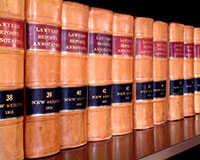 In public law, a material mistake of fact by a decision maker amounts to a breach of the rules of natural justice and constitutes an unfairness. But the courts have, over a period of time, recognised that in a claim for judicial or statutory review a mistake of fact giving rise to an unfairness may also amount to an error of law.
In public law, a material mistake of fact by a decision maker amounts to a breach of the rules of natural justice and constitutes an unfairness. But the courts have, over a period of time, recognised that in a claim for judicial or statutory review a mistake of fact giving rise to an unfairness may also amount to an error of law.
The relevant tests laid down by the courts are as follows: (1) There must have been a mistake as to an existing fact, including a mistake as to the availability of evidence on a particular matter. (2) The fact or evidence must have been “established”, in the sense that it was uncontentious and objectively verifiable. (3) The claimant, or its advisers, must not have been responsible for the mistake. (4) The mistake must have played a material (though not necessarily decisive) part in the decision maker’s reasoning.
(These tests were applied in a planning context, for instance, in R (on the application of MacArthur) v Secretary of State for Local Government [2013] EWHC 3 (Admin). There it was unsuccessfully contended that an inspector’s decision on a planning appeal was vitiated by a material error of fact, namely that he had failed to record or remember a concession made by an expert witness at the inquiry.)
In R (on the application of Chalfont St Peter Parish Council) v Chiltern District Council [2104] EWCA Civ 1393; [2014] PLSCS 195 the appellant’s claim for (inter alia) judicial review of a decision by the local planning authority (“LPA”) to grant planning permission for a mixed use development on the site of a former convent school had been dismissed at first instance. A crucial question for the Court of Appeal was whether the court below should have found that the LPA’s planning committee made its decision based on an error of fact as to the extent of the playing field on the site, and that such error of fact had lead it to conclude that the planning application complied with policy R2 of the adopted district local plan.
The appeal judges held that there had been no mistake of the kind envisaged by the tests above. Whether a particular open space was a “playing field” within policy R2 was a matter requiring the exercise of judgment by the LPA in an evaluative sense. While that, in itself, would not be fatal to establishing a mistake of fact, caution was needed in the planning context. There was conflicting evidence on the playing field issue, and the LPA’s planning committee could not be said unequivocally to have misunderstood the facts.
John Martin







